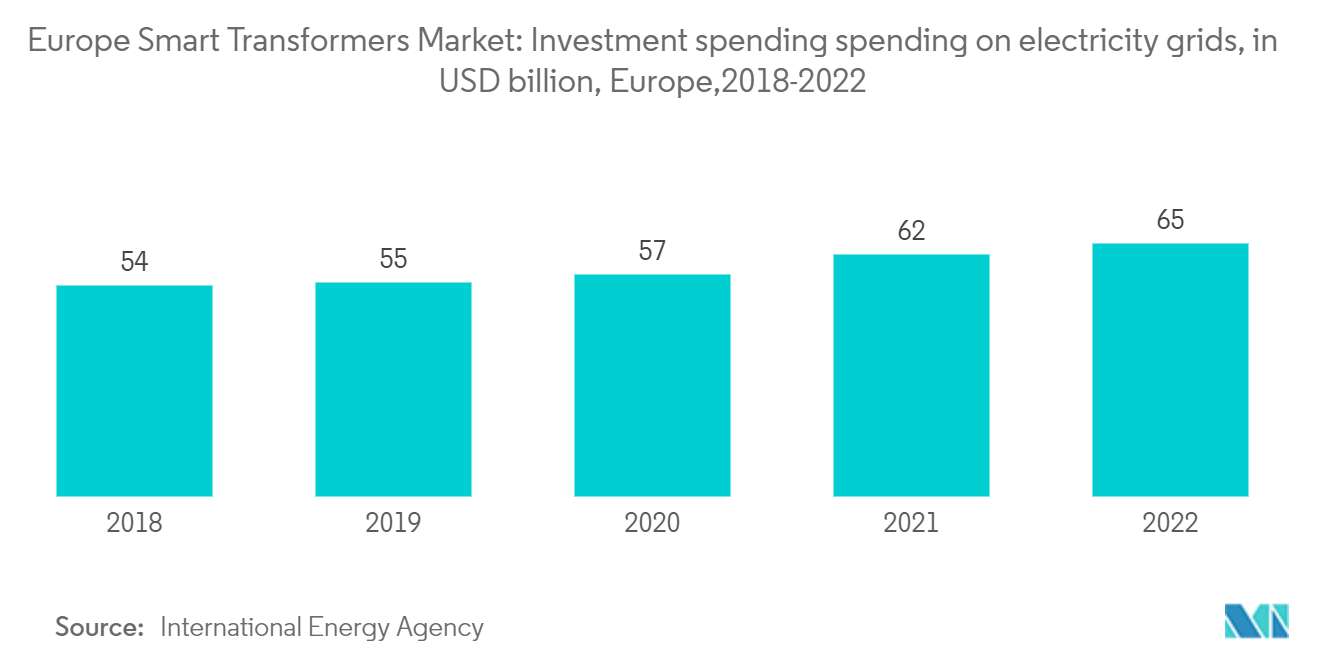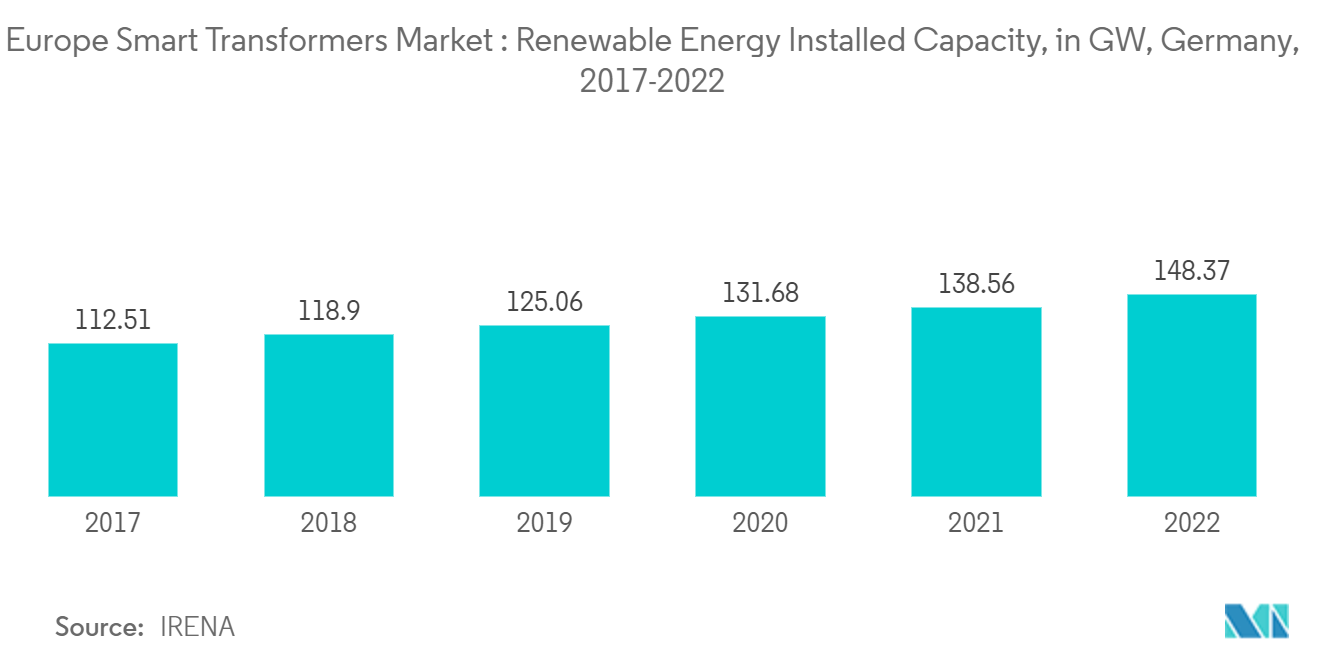Market Trends of Europe Smart Transformers Industry
Distribution Transformers to Dominate the Market
- A smart distribution transformer is capable of active voltage regulation along with conservative voltage reduction-based frequency control. Further, an LV distribution management will be developed to aid the management decisions. The smart distribution transformer is an excellent alternative to conventional distribution transformers to introduce more smart features, which will improve the robustness, resilience, and flexibility to meet future challenges on the grid.
- Traditional distribution transformer terminals are designed in a way to provide specific control and monitoring functions for distribution transformers, thus having limitations in aspects such as inadequate scalability of software and hardware, proprietary communication, and non-standardized design, which commonly requires high costs for operation and upgrading. To address the situation, the smart distribution transformer terminal is proposed and defined with a combination of communication gateway function and distribution network monitoring and control capability.
- The growing emphasis on renewable energy generation worldwide, coupled with increasing electrical infrastructure projects, is expected to increase the demand for distribution transformers during the forecast period, thereby driving the smart transformers market.
- Significant economies, such as Germany, the United Kingdom, France, and others, contribute to the considerable demand for intelligent transformers, owing to the increasing replacement of aging power distribution equipment and the increase in the integration of renewables into the grid.
- Moreover, as the energy transition proceeds, power distribution is becoming more and more complex. Smart grids are required to monitor power grids and control the flow of energy. For instance, Burladingen, Germany, will soon witness a pioneering electrical substation connected to the grid. In February 2023, Distribution grid operator Netze BW announced plans to put the transformer station into operation by the end of 2023, which will be equipped with two tranformers featuring protection and control technology.
- Moreover, as per the International Energy Agency, investment spending in electricity grids in Europe increased to USD 65 billion in 2022 from USD 62 billion in 2021, which may drive the growth of smart transformers in Europe.
- Thus, the abovementioned points are expected to drive the segment's growth during the forecast period.

Germany is Expected to be the Fastest-growing Market
- Germany has elevated demand for transformers owing to several causes, including industrial applications, grid modernization, integration of renewable energy sources, and infrastructural growth. With aggressive goals for eliminating greenhouse gas emissions and increasing the proportion of renewable energy sources in its energy mix, Germany has been making a proactive transition to renewable energy. This transition requires the deployment of transformers suitable for integrating renewable energy sources, such as wind and solar, into the grid.
- In 2022, the German government announced a USD 21.07 billion investment plan for smart grid development, which includes funding for the deployment of smart transformers. The government is also targeting a 100% renewable energy mix by 2040, which will require a significant investment in smart grid infrastructure.
- Moreover, Germany is the largest country by size and population in Europe and, predictably, is also the largest energy consumer in the region. Renewable energy sources produced around 43.92% of the country's total electricity in 2022, which is in line with Germany's government's goal, which has envisioned increasing the share of renewables to at least 40% of electricity production in 2050.
- According to the International Renewable Energy Agency (IRENA), in 2022, Germany installed nearly 9.8 GW of renewable energy capacity, a 7.1% Y-o-Y rise in total installed capacity, and reached 148.37 GW. Further, the installed capacity of sources such as solar, onshore, and offshore wind is expected to increase exponentially, making it one of the significant markets for smart transformers.
- As of 2022, Germany's power industry is dominated by renewable energy, followed by coal and natural gas thermal power plants. Nearly 576.6 billion KWh of electricity was generated in 2022, of which about 44.3% was renewable, 45.9% was thermal, and the remaining was nuclear.
- Moreover, rapid urbanization, increasing demand for mobility, and the growing concerns of CO2 emissions across the country are progressing rapidly and are creating a demand for efficient and reliable transportation such as railways. With record investments, Germany's federal and state governments are promoting rail expansion throughout the country. The federal and state governments are investing over EUR 650 million in upgrading the rail networks in Rhineland-Palatinate and Saarland alone. Deutsche Bahn (DB AG) is modernizing about 100 kilometers of line, 115 switches, eleven bridges, and 75 stations in the two states. Such developments are expected to create significant opportunities for the smart transformer market during the forecast period.
- Therefore, the increasing developments of grid infrastructure, the growing demand for stable electricity, and the propelling investment in renewable energy in Germany are expected to positively impact the demand for the smart transformer market during the forecast period. Additionally, the increasing trends of railway network expansion and automation of electric grids are further expected to boost the demand for smart transformers in the region.


